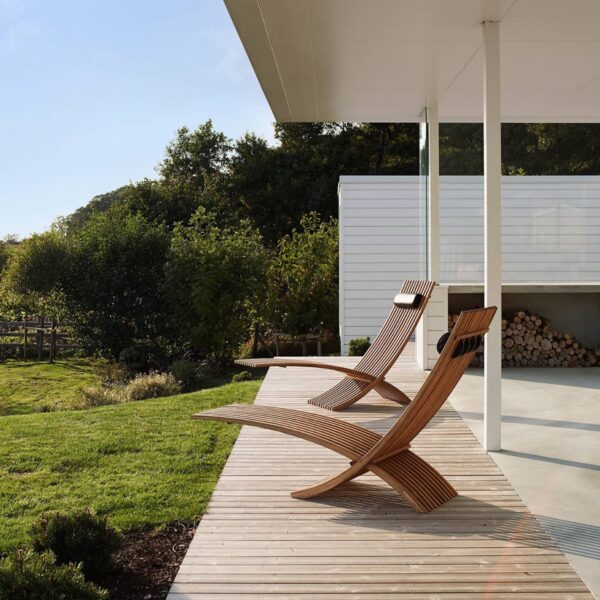
The Adirondack chair, with its iconic slanted seat and wide armrests, is a classic piece of outdoor furniture that adds charm to any garden or patio. Building one yourself can be a rewarding project, combining woodworking skills with the satisfaction of creating something beautiful and functional. In this guide, we'll walk you through the process of making your own Adirondack chair, from gathering materials to the final touches.
Materials and Tools You'll Need
Before starting, ensure you have all the necessary materials and tools:
Materials:
- 2x4 lumber (cedar or pine is recommended)
- 1x4 lumber
- Exterior wood screws (1.5" and 2.5")
- Wood glue
- Sandpaper (80 and 120 grit)
- Wood filler (optional)
- Exterior wood finish or paint
Tools:
- Miter saw or circular saw
- Drill with a countersink bit
- Jigsaw
- Measuring tape
- Carpenter's square
- Clamps
- Paintbrushes or sprayer
Step 1: Cut the Wood Pieces
Start by cutting the wood into the necessary pieces. Here are the basic dimensions:
- Front Legs: Two pieces of 1x4 lumber, each 21 inches long.
- Back Legs/Seat Supports: Two pieces of 2x4 lumber, each 36 inches long, cut at a 15-degree angle at one end.
- Armrests: Two pieces of 1x4 lumber, each 31 inches long.
- Seat Slats: Five pieces of 1x4 lumber, each 22 inches long.
- Back Slats: Seven pieces of 1x4 lumber, each 32 inches long, with the top ends cut to form a slight arch.
- Crosspieces: Two pieces of 1x4 lumber, each 23 inches long (for the back support) and one piece 1x4 lumber, 20 inches long (for the front apron).
Ensure all cuts are smooth and accurate to make assembly easier.
Step 2: Assemble the Chair Frame
Start with the back legs and seat supports:
- Attach the Front Legs to the Seat Supports: Position the front legs flush with the front edge of the seat supports. Drill pilot holes, apply wood glue, and secure them with 2.5" screws.
- Attach the Rear Crosspiece: Place the 23-inch crosspiece between the back legs at the desired height for the seat. Drill pilot holes and secure it with 2.5" screws.
Step 3: Add the Seat Slats
- Position the Slats: Lay the seat slats across the seat supports. Start with the slat closest to the front legs, leaving about a 1/4-inch gap between each slat.
- Secure the Slats: Drill pilot holes, countersink them, and secure the slats with 1.5" screws.
Step 4: Build and Attach the Backrest
- Attach the Back Slats: Lay out the back slats on a flat surface, arranging them in the desired order. Attach the remaining 23-inch crosspiece across the back slats, about 5 inches from the top. Use 1.5" screws to secure each slat.
- Secure the Backrest to the Frame: Position the assembled backrest against the rear legs. Drill pilot holes, and attach it to the chair frame using 2.5" screws.
Step 5: Attach the Armrests
- Position the Armrests: Lay the armrests flat on top of the front legs and the backrest.
- Secure the Armrests: Drill pilot holes, countersink them, and secure the armrests with 2.5" screws. Add additional screws at the backrest if needed.
Step 6: Sanding and Finishing
- Sand the Chair: Smooth all surfaces with 80-grit sandpaper, then finish with 120-grit sandpaper to remove any rough edges or splinters.
- Apply Finish: Choose a wood stain, paint, or clear finish suitable for outdoor use. Apply evenly with a brush or sprayer. Allow each coat to dry completely before applying the next.
Step 7: Final Touches
Check all screws and joints to ensure they are secure. Add wood filler to any gaps or holes if desired, then sand and touch up with paint or finish.
Conclusion
Building an Adirondack chair is a fun and fulfilling woodworking project that results in a comfortable and stylish piece of furniture for your outdoor space. With a little time and effort, you can create a durable chair that you'll enjoy for years to come. Whether you're a seasoned DIY enthusiast or a beginner looking for a challenge, this project offers a great opportunity to improve your skills and add a personal touch to your garden or patio.
